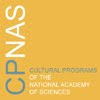to comment on this post, click on "comments" below
to return to main page go to www.visualcultureandbioscience.org
From: Michael Sappol
Date: Mon, 5 Mar 2007 14:28:20 -0500
I'm a historian. I work on the history of anatomical illustration,medical iconography and representation. I'm also an exhibition curator.A few sketchy thoughts: New imaging technologies (MRI, sonography, CTscan, PET scan, etc.)--like anatomical engraving, watercolor, pencilsketching, chromolithography, photomicroscopy, chronographometry--havebecome a part of our visual environment, are a visual vocabularydeployed by fine artists and designers, in gallery, book and museumsettings, and also in commercial film, video, print, computer graphicsand other media. As such images become pervasive, there is a cumulativenaturalization effect: the digitized, manipulated image, paradoxically,signifies the natural world, becomes the order of things. Evenhistorical productions that might provide a counter-example, such as the pre computer age imaging technologies listed above, become subsumed bydigitization, insofar as most people only know such productions throughcomputer, television, or digitized printed pages and projections.
to comment on this post, click on "comments" below
to return to main page go to www.visualcultureandbioscience.org
Subscribe to:
Post Comments (Atom)

No comments:
Post a Comment